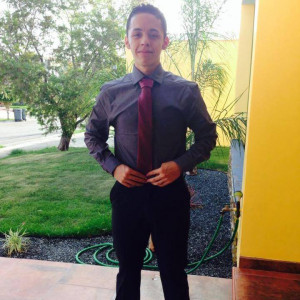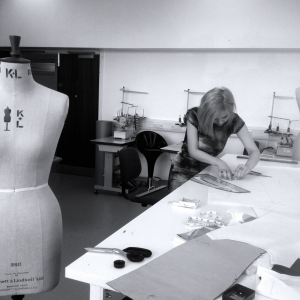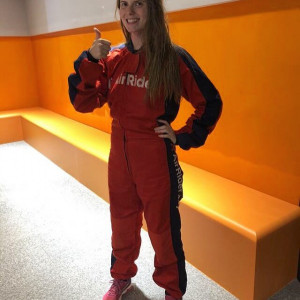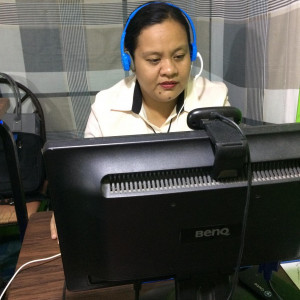How do you manage having too much or not enough work?
Interview with John, a full-stack web developer who works remotely
I do have multiple clients sometimes , I actually just wrapped up working for a client a few weeks ago.
The way I manage too much work is I wake up early and I divide my work hours between the clients.
I usually have no more than two so I can divide 5 hours to each for a total of 10. This does require me to work on the weekends but I'm ok with that.
In regards to too little work always keep searching for your next client and make sure to save up so you have enough money to get you through the slow times.
John works remotely while using the latest web development technologies, learn how he works by reading his interview.
Read full interview from Interview with John, a full-stack web developer who works remotely.
Interview with Mike, a software engineer who works remotely at GitHub
When I have too much work I try to ensure that I'm strict with myself on not working too late into the evening.
I have hard cut-off times and if I can't get my work done by then: tough.
When I don't have enough work I try to find things to do but if I'm struggling I take the time to unwind so I'm better mentally prepared for when I do have more work to do. This is another luxury of not working in an office; I don't need to always look like I'm being productive when I'm not.
Mike got started with remote work after getting an offer from his dream organisation. Learn how he works remotely while working on open source projects and publishing books.
Read full interview from Interview with Mike, a software engineer who works remotely at GitHub.
Interview with Alexandra, a freelance fashion designer building her own brand
At the beginning was hard, since I had to spend a lot of time building up my profile and my portfolio. I also had to work on projects that I didn’t enjoy so much and spending a lot of time applying for new jobs.
Now I started to have long term clients with constant work and I also get a lot of new job invitations on Upwork. When I started freelancing, I had a full time job for a while and when things started to get better, I quit and focused just on freelancing.
Alexandra is a freelance fashion designer who works remotely while traveling and building her own brand.
Read full interview from Interview with Alexandra, a freelance fashion designer building her own brand.
Interview with Nelvina, a fashion designer who designs bags and clothing
Whenever I have too much work, I make sure to organize my time well.
Given the fact that most of my clients are a few hours behind, I usually get a few more hours to complete work to be able to submit something on a specific date.
There are periods of time when there is less work but I usually manage by finding different projects either on Upwork or locally. I worry less about not having work nowadays as I get work from regular clients and usually achieve my monthly target.
Nelvina is a freelance fashion and graphic designer that works remotely while working with clients all around the world
Read full interview from Interview with Nelvina, a fashion designer who designs bags and clothing.
Interview with Michael, a VFX artist that works remotely
This is a tough question to answer because in crunch mode, where I work 20 hrs with just a coffee and snickers bar, I tend to be so focused on the work I don’t track the time very well.
The only thing on my mind is to finish the work I have laid in front of me by this set time so I can work on the next part by the next set time.
When there isn’t enough work I work part time at a store, fix television sets, washers, dryers, electrical wiring, cars and trucks, mow lawns, to keep up with the bills. I also don’t like to stress over not enough work either so I also tend to relax and take the kids to the beach or watch a movie go to the gym or work on my own personal projects.
Michael is a freelance visual effects (VFX) artist, creating 3d models, mockups and videos while working remotely.
Read full interview from Interview with Michael, a VFX artist that works remotely.
Interview with Ayesha, a freelance writer that gained early clients through her blog
At this point, I don’t say no to any work.
I feel I’m learning with every new client and every new project.
I know that if I plan well and ahead of time, I can always meet deadlines. It takes a bit of a planning.
There are times when I don’t have enough work, but I fill up that time playing Lego and talking about dinosaurs with my possibly-future-paleontologist son.
Ayesha is a freelance content writer—learn how she made the leap to remote work while building her blog and raising her family
Read full interview from Interview with Ayesha, a freelance writer that gained early clients through her blog.
Interview with Hannah, a freelance writer that travels the world
That has been a struggle in the past.
I transitioned into being 100% freelance. There was a time where I had a great part-time job that I physically went to three days a week and I freelanced the rest of the time. This was useful because, no matter how slow freelancing was, I still had consistent money coming in.
However, I still wanted even more flexibility so I could travel. Then, I transitioned to full-time freelance and it was definitely difficult at first because I could go from being extremely busy to having almost no work. During this I tried to cut personal expenses.
Right now, I have no problems getting enough work. One of my freelance jobs is full-time so, while I can take on side projects if I wish, there is always plenty of tasks to complete for my job and I know money is coming in.
It’s really important to focus on getting long-term clients instead of a bunch of one-time projects.
Unless you have some money saved up, I wouldn’t recommend going full-time freelance until you have some steady clients.
Hannah is a freelancer writer and social media manager that travels the world while working remotely. Read her interview to learn how she works.
Read full interview from Interview with Hannah, a freelance writer that travels the world.
Interview with Bennah, a remote ESL teacher that teaches kids English all over the world
I’ve been in a lot of pressure most of the time, being tired from my day job and will go on to my home based job as of the moment.
If I have the time before the class, I eat my dinner fast, or if the class was scheduled earlier I will eat after all my classes. I always think positive whenever I feel tired because it means that I am doing something.
If don’t have enough work, I would usually search on the internet for jobs that I can have as part time too.
Bennah is an ESL (English as a Second Language) Teacher who teaches students from all around the world while working from home.
Read full interview from Interview with Bennah, a remote ESL teacher that teaches kids English all over the world.
Interview with Deb, a sales copywriter who transitioned from software development
Finding a steady flow of projects is one of the toughest aspects of freelancing. I have faced the typical “feast or famine” cycle that most freelancers go through.
There have been occasions when I’ve not had work for months at a time. Other times there have been occasions when it feels like I am running on a treadmill, just trying to meet the deliverables for multiple clients.
There have been occasions when I haven’t been able to say “No” to a project, simply because my current project was about to come to an end. As a result, the quality of my work suffered, and/or I had to spend sleepless nights trying to complete work – not an ideal situation.
Over a period of time, I have learned from my mistakes, and currently I am in a balanced place. Here is what I try to do when I face either of the above situations:
Having too much work
A very good situation to be in! First, I make an assessment as to my current flow of projects, if I have enough free hours in a day to take on any new project requests. If I don’t, I politely tell my prospective clients that I am booked up for now (I generally tell them when I’ll be available) and to look for somebody else to do their projects. There are a few times, when I refer them to other freelancers. This leads to a win-win situation for everybody – the client is happy because he gets his project done, the other freelancer is happy because he or she gets to do an unexpected project.
At times, this has led to reciprocal referrals by the other freelancer to me!
Not having enough work
Golden rule that I’ve learnt over the last few years – not to panic. During my initial days of freelancing when I didn’t have enough work, I used to plunge myself headlong into applying for projects left, right and, centre.
Just to keep myself busy, I took on projects at rates that were much lower than my usual rate. And more often than not regretted that decision.
I learnt that a lot of low paying clients were usually bottom fishers and would negotiate hard because they could sense desperation in a freelancer. At the same time, they had sky high expectations about the deliverables. What I realized a few days/weeks after taking such a project was that I didn’t have the free time to take up a more lucrative and satisfying project when it came along.
Nowadays, when I don’t have enough work, I do the following:
-
Take a break for a few days – go for a short drive out of town for a couple of days in the middle of the week. I thank myself at such times that I am not in a corporate 9 to 5 job, where I have to apply for a holiday a few weeks in advance. The break helps me recharge my batteries and I can get back to my desk reenergised.
-
Update my Upwork and social media profiles with updates about the projects I’ve done.
-
Start browsing around for projects and apply only for those projects which appear to be a good fit with what I want to do and my rates. Since I have a relatively strong portfolio and decent experience, I start getting interview calls in a short time.
It may take a few days (or a couple of weeks), but more often than not I have my hands full with an interesting project.
Deb made the jump from full-time software developer to freelance sales copywriter—learn how he made the transition.
Read full interview from Interview with Deb, a sales copywriter who transitioned from software development.
Interview with Hanling, a data scientist that works remotely on machine learning
It's not possible for having too much work. If I don't have any more time to do other jobs, I wouldn't apply for new positions and I'll decline invitations if there are any.
The more common problem is having not enough work, which means there's some problem with your personal profile, your rate or your cover letter/job proposal.
In this case, I'll look for what my problem lies in and take corresponding actions and then apply for more new jobs. Actually for me, when I can't get enough work, I'll apply for any work I can do and decrease my rate to appeal to clients.
Hanling started working remotely as a student and now does freelance machine learning and data analysis for clients all around the world.
Read full interview from Interview with Hanling, a data scientist that works remotely on machine learning.









